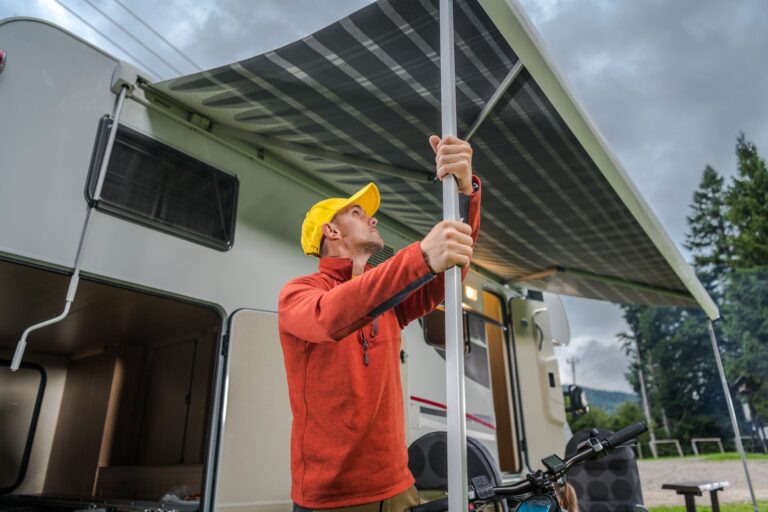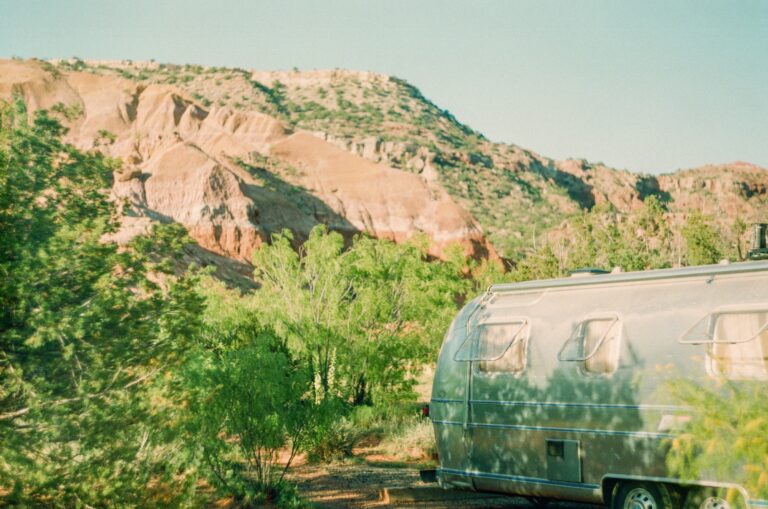Embarking on an RV adventure can be exciting and liberating, but for new RVers, it can also be a bit overwhelming. One of the most important aspects of RVing is finding the perfect place to park your home on wheels. With so many different types of RV campgrounds to choose from, it can be hard to know where to begin. In this comprehensive guide, we’ll explore various types of RV campgrounds, what to look for, and how to choose the perfect place to park your RV.
Table of Contents
- Types of RV Campgrounds
- What to Look for in an RV Campground
- How to Choose the Right RV Campground
- Making Reservations
- Etiquette and Safety Tips
1. Types of RV Campgrounds
There are several types of RV campgrounds to choose from, each offering unique experiences and amenities. Some of the most common types include:
- Public Campgrounds: Operated by federal, state, or local governments, public campgrounds usually offer basic amenities such as picnic tables, fire rings, and restrooms. They are often located within national parks, state parks, and national forests, providing access to beautiful natural settings and recreational activities.
- Private RV Parks and Resorts: Privately owned and operated, these campgrounds typically offer a wide range of amenities, such as full hookups, laundry facilities, swimming pools, and on-site stores. Private RV parks and resorts can range from basic to luxurious, with some even offering golf courses, spas, and fine dining.
- Membership Campgrounds: These campgrounds require a membership fee for access and often offer additional benefits like discounted rates and access to a network of affiliated campgrounds. Membership campgrounds can vary in terms of amenities and can be a cost-effective option for frequent RV travelers.
- Boondocking or Dispersed Camping: For those who prefer a more off-the-grid experience, boondocking or dispersed camping allows RVers to park in remote locations without any amenities. This type of camping is often free or low-cost, but requires RVers to be self-sufficient and practice Leave No Trace principles.
2. What to Look for in an RV Campground
When evaluating potential RV campgrounds, consider the following factors:
- Location: Choose a campground that is close to the attractions and activities you’re interested in. Additionally, consider factors such as distance from major highways, noise levels, and scenic views.
- Amenities: Determine which amenities are important to you, such as full hookups, restrooms, showers, laundry facilities, Wi-Fi, and on-site stores. Keep in mind that more amenities often come with a higher price tag.
- Campsite Size and Layout: Ensure the campground can accommodate your RV’s size and any slide-outs or awnings. Also, consider whether you prefer pull-through or back-in sites and the level of privacy you desire between campsites.
- Pet-Friendliness: If you’re traveling with pets, verify that the campground allows them and offers pet-friendly amenities, such as designated walking areas and waste disposal stations.
- Recreational Activities: Consider what types of activities you enjoy and whether the campground offers access to them, such as hiking trails, fishing spots, playgrounds, or swimming pools.
- Price: Campground prices can vary widely depending on location, amenities, and time of year. Set a budget and decide whether you’re willing to pay more for additional amenities or a more convenient location.
3. How to Choose the Right RV Campground
To help narrow down your options and choose the perfect RV campground, follow these steps:
- Determine Your Priorities: What are your must-haves and deal-breakers? Are you looking for a quiet, remote location or a bustling RV resort with plenty of activities? Knowing your priorities will help you focus your search.
- Research Campgrounds: Utilize online resources such as campground directories, review websites, and RV forums to gather information about potential campgrounds. Make a list of campgrounds that meet your criteria.
- Read Reviews: Look for reviews from fellow RVers to get a better understanding of what to expect from each campground. Be sure to read both positive and negative reviews to get a balanced perspective.
- Check Availability: For popular campgrounds and during peak travel seasons, you may need to make reservations well in advance. Call or check online to verify availability for your desired dates.
- Make a Decision: Based on your research, choose the campground that best meets your needs and preferences. Remember that no campground will be perfect, but finding one that checks most of your boxes will make for an enjoyable RV experience.
4. Making Reservations
Once you’ve chosen your ideal RV campground, it’s time to secure your spot. Follow these tips for making reservations:
- Book Well in Advance: Popular campgrounds and peak travel seasons can fill up quickly. To ensure you get your desired campsite, book as far in advance as possible. Some campgrounds accept reservations up to a year in advance.
- Be Flexible with Dates: If your preferred campground is fully booked, consider adjusting your travel dates. Mid-week stays and traveling during shoulder seasons can often yield more availability and lower prices.
- Confirm Reservation Details: Once you’ve made a reservation, double-check the details, such as campsite number, length of stay, and any fees or cancellation policies. Keep a record of your reservation confirmation for easy reference.
5. Etiquette and Safety Tips
To ensure a positive experience for both you and your campground neighbors, follow these etiquette and safety tips:
- Arrive and Depart on Time: Respect the campground’s check-in and check-out times to allow staff time to prepare sites for incoming guests.
- Observe Quiet Hours: Most campgrounds enforce quiet hours, typically between 10 p.m. and 7 a.m. During these times, keep noise levels to a minimum to avoid disturbing your neighbors.
- Keep Your Campsite Clean: Maintain a clean and tidy campsite by disposing of trash in designated receptacles, cleaning up after pets, and storing food securely to avoid attracting wildlife.
- Respect Boundaries: Avoid cutting through neighboring campsites, and maintain a respectful distance from other RVs and campers.
- Follow Campground Rules: Adhere to all posted rules and regulations, such as speed limits, pet leash requirements, and fire restrictions.
- Practice Campfire Safety: If allowed, keep campfires small, never leave them unattended, and ensure they are fully extinguished before leaving or going to bed.
- Be Prepared for Emergencies: Familiarize yourself with the location of emergency facilities, such as fire extinguishers and first aid kits. Keep a list of important phone numbers, such as the campground office and local emergency services.
By following this guide, you’ll be well on your way to choosing the perfect RV campground for your home on wheels. Remember, the most important aspect of RVing is enjoying the journey and making lasting memories. So, take your time, do your research, and embrace the adventure that awaits you.
Key Takeaways:
- Consider the different types of RV campgrounds, including public campgrounds, private RV parks and resorts, membership campgrounds, and boondocking or dispersed camping.
- Look for factors such as location, amenities, campsite size and layout, pet-friendliness, recreational activities, and price when evaluating potential campgrounds.
- Determine your priorities, research campgrounds, read reviews, check availability, and make a decision based on your needs and preferences.
- Book your campsite well in advance, be flexible with dates, and confirm reservation details.
- Practice proper campground etiquette and safety to ensure a positive experience for both you and your neighbors.
Happy RVing!






